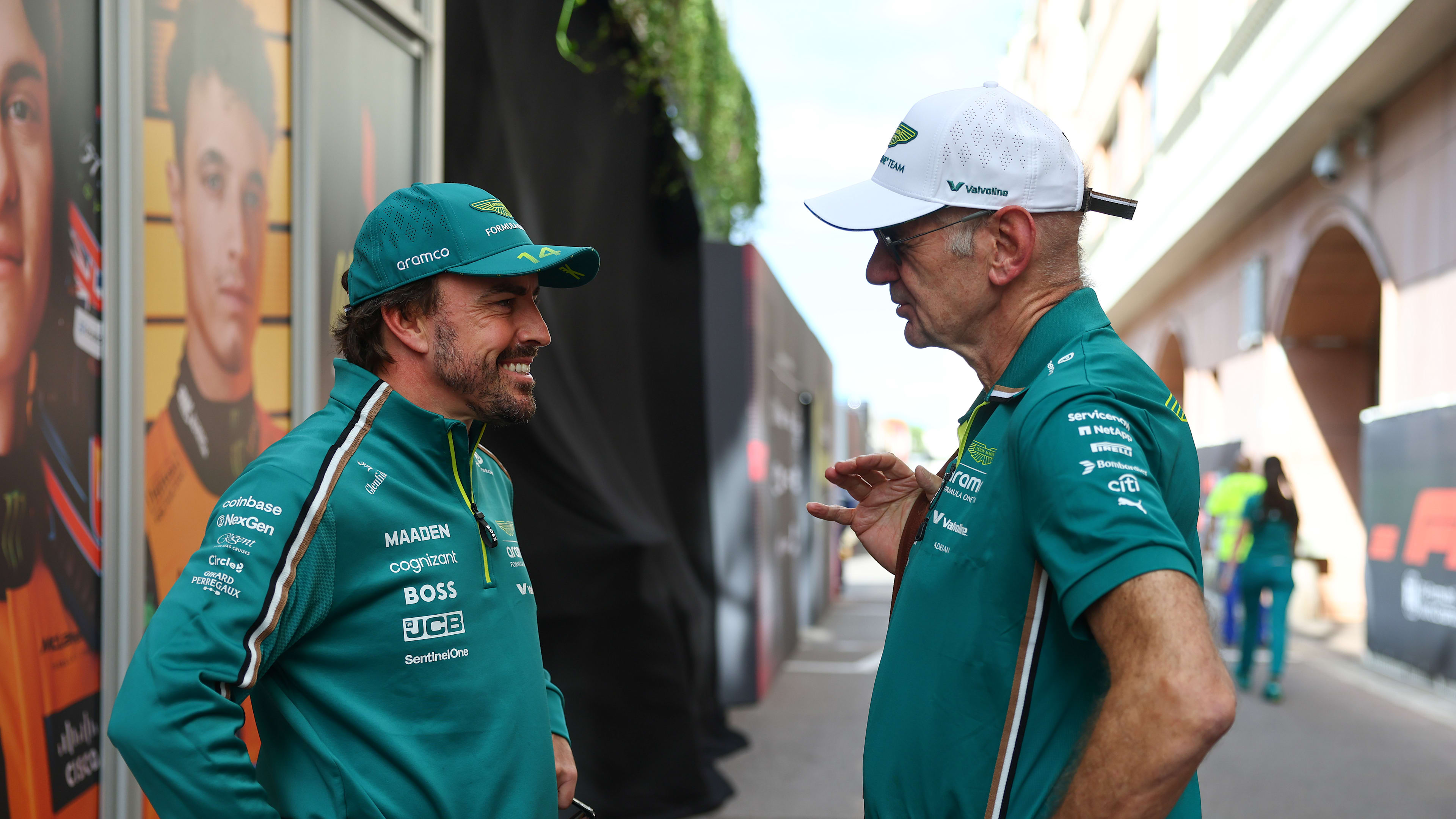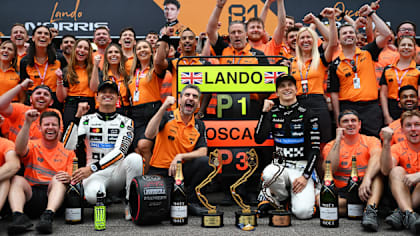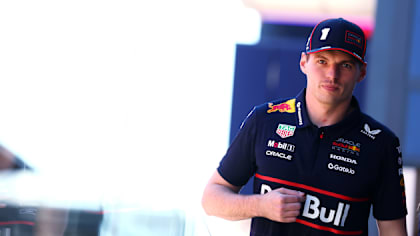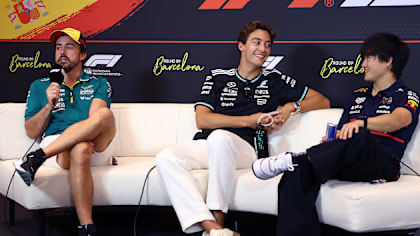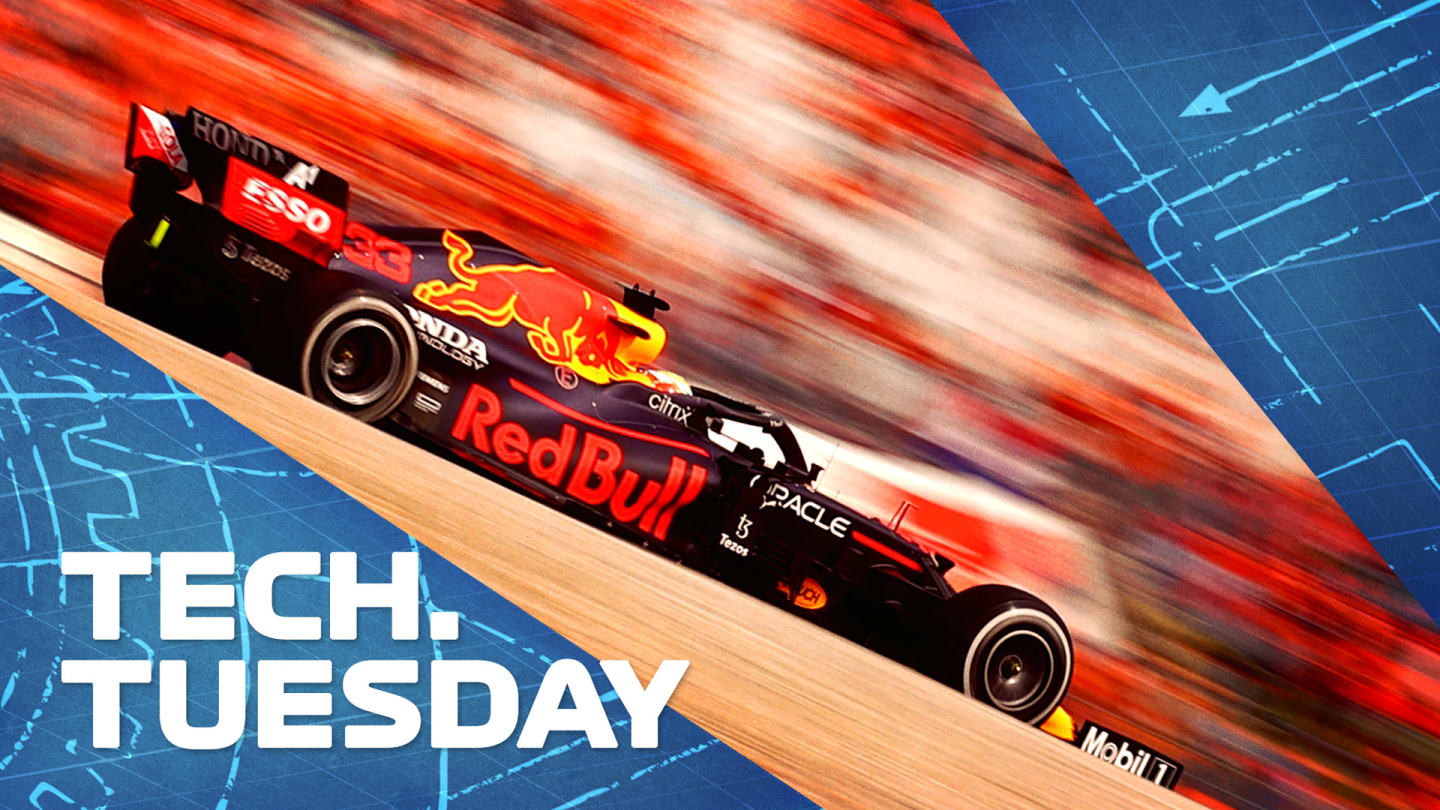
Technical
The two key upgrades that helped Verstappen pull even further ahead of Mercedes in the Austrian GP

Share

Max Verstappen's dominant display in the Austrian Grand Prix may have seemed like a repeat of his Styrian GP triumph, but his Red Bull RB16B was sporting a markedly different package last weekend to the weekend before. Mark Hughes explains what Red Bull brought to win the final race of F1's first 2021 triple-header, with a technical illustration by Giorgio Piola.
Red Bull continue to push ahead with a very aggressive development programme on their RB16B even as Max Verstappen extends his lead in the world championship. The car he took to victory in the Austrian Grand Prix was quite different to that in which he won the Styrian Grand Prix seven days earlier.
You may have heard one of his radio messages during the race on Sunday when he’d been asked for a balance update: “The new wing is nice.”
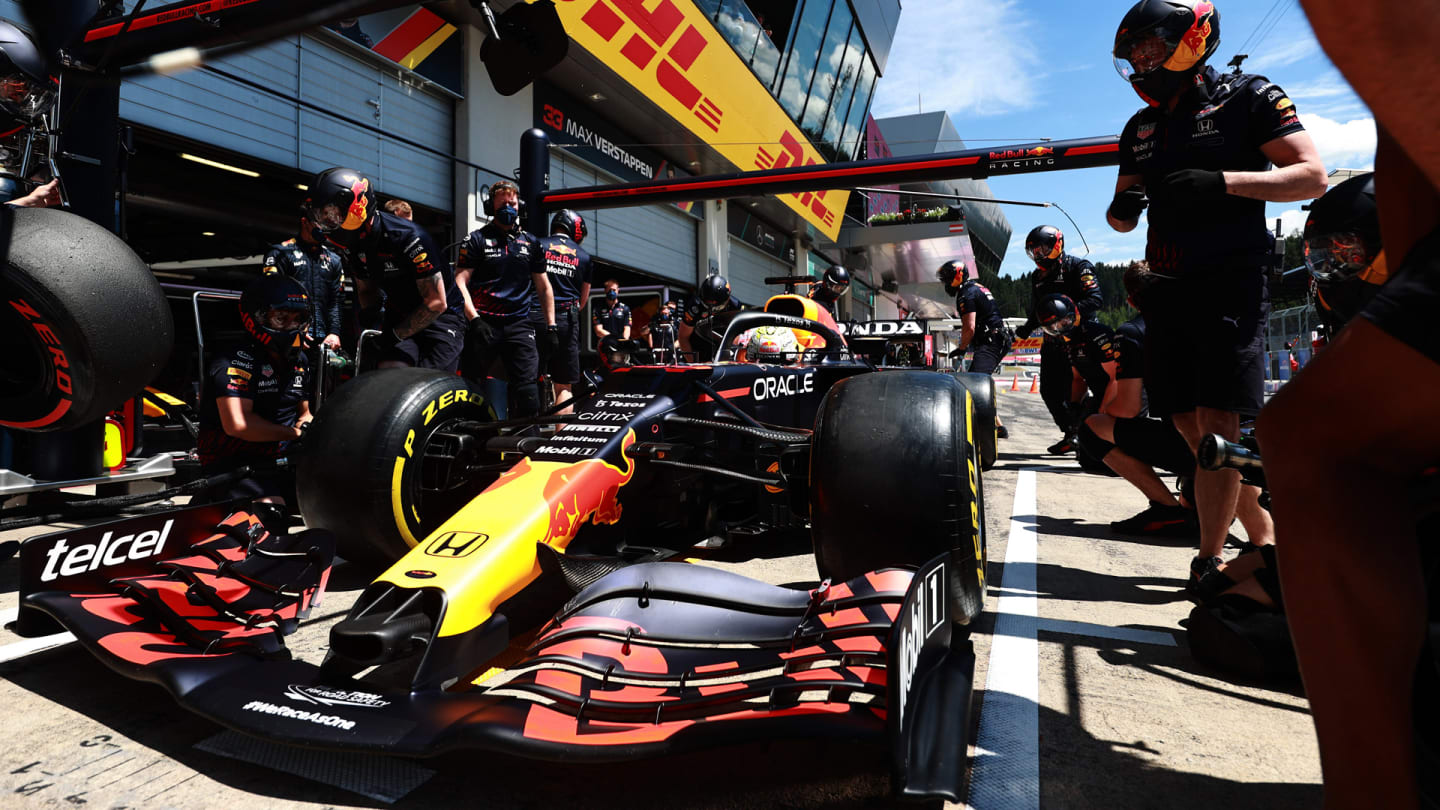
A close look at the front wing Red Bull brought for Verstappen at the Austrian GP
What he was referring to was a new front wing, which had been readied just in time for the weekend for his car only. This was working in conjunction with a heavily revised bargeboard, also only on Verstappen’s car, such had been the hurry to get the parts made.
Sergio Perez had the updated diffuser that was introduced on Verstappen’s car at the Styrian Grand Prix, with the full width shark’s teeth serrations along the top – but retained the previous wing and bargeboards.
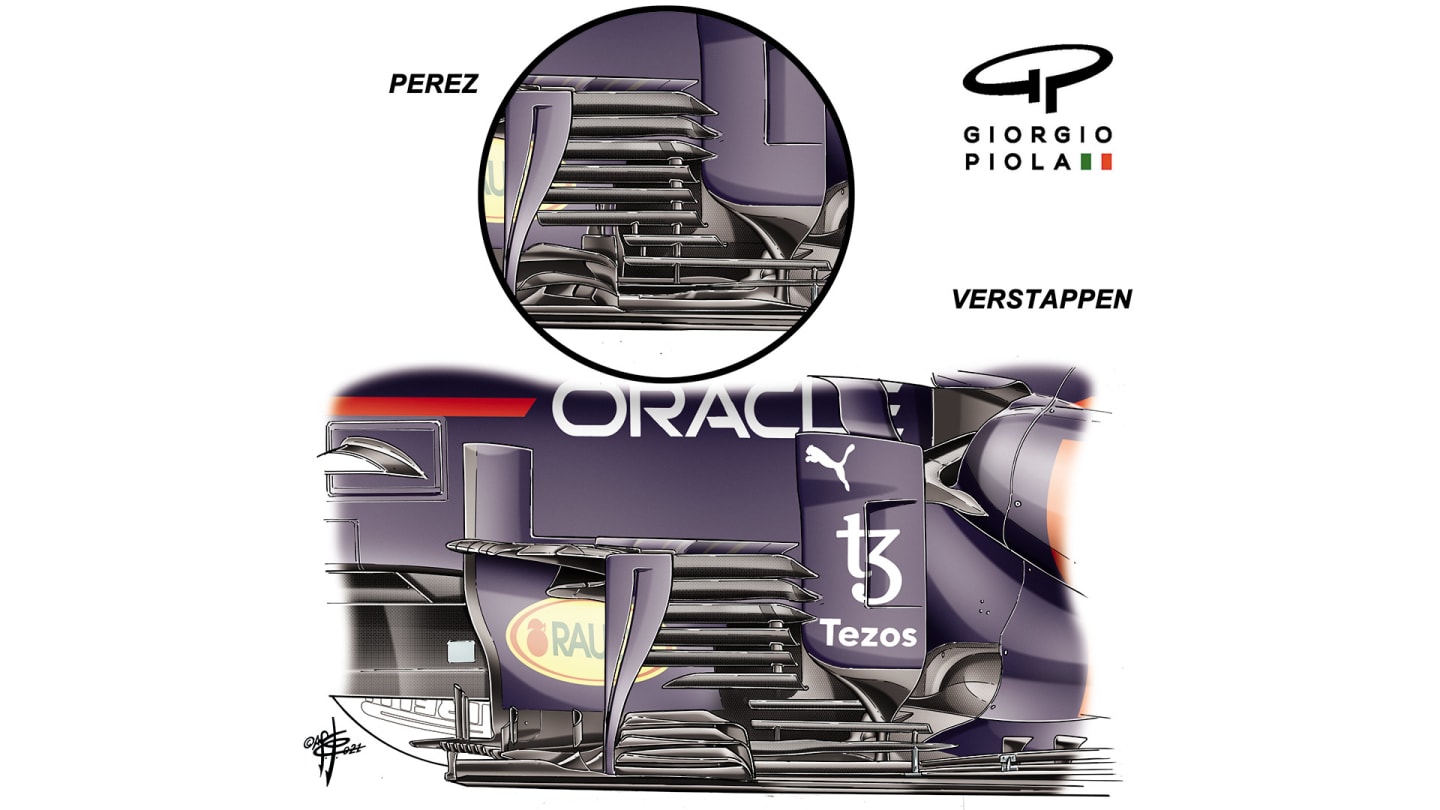
A comparison between Perez's bargeboard and Verstappen's – both in use during the Austrian GP
The new wing is very much of the same family and only subtly changed in its geometry, but the main distinguishing features are a more aggressive upsweep from the inboard end, with the upper flap rising further from there and consequently sweeping back down further towards the outboard end.
The sweep is enhanced – as is the upsweep of the base of the wing towards the outboard, creating a bigger throat area beneath.
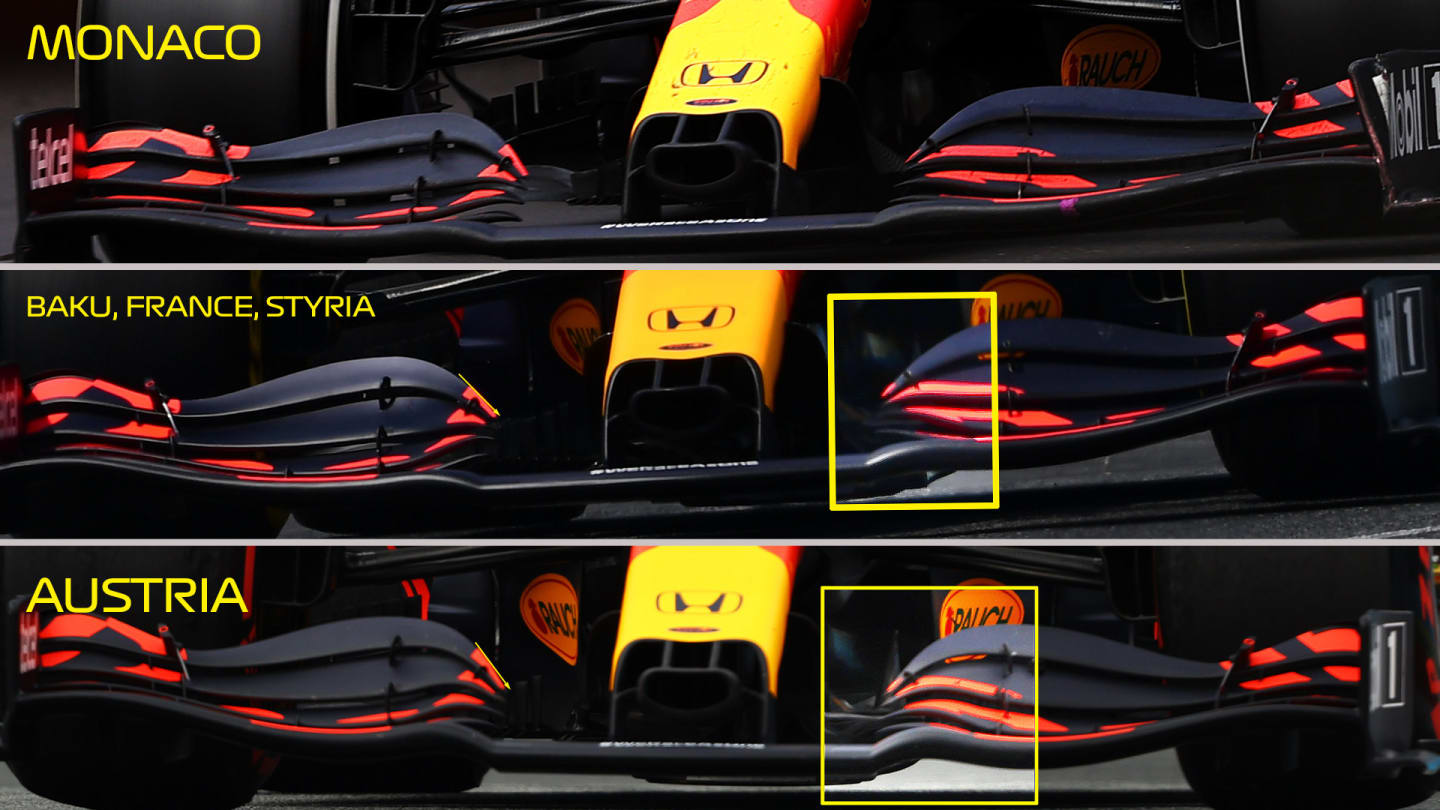
A comparison of Red Bull's front wings from Austria (bottom), Styria (centre) and Monaco (top) with the yellow boxes showing the aggressive upsweep
It’s essentially a higher-downforce wing than before, which should give more direct front end downforce, possibly at the expense of some underfloor downforce at the rear as the greater height of the flaps at the inboard end will be blocking some flow to the underbody.
The greater throat area would be expected to outwash more of the flow around the front wheels, helping to keep it from interfering with the work being done by the flow going between the wheels, which is used by the bargeboards to increase the efficiency of the underfloor by accelerating the air into it.
TECH TUESDAY: Why there's more to Red Bull's 2021 pace than the regulation changes
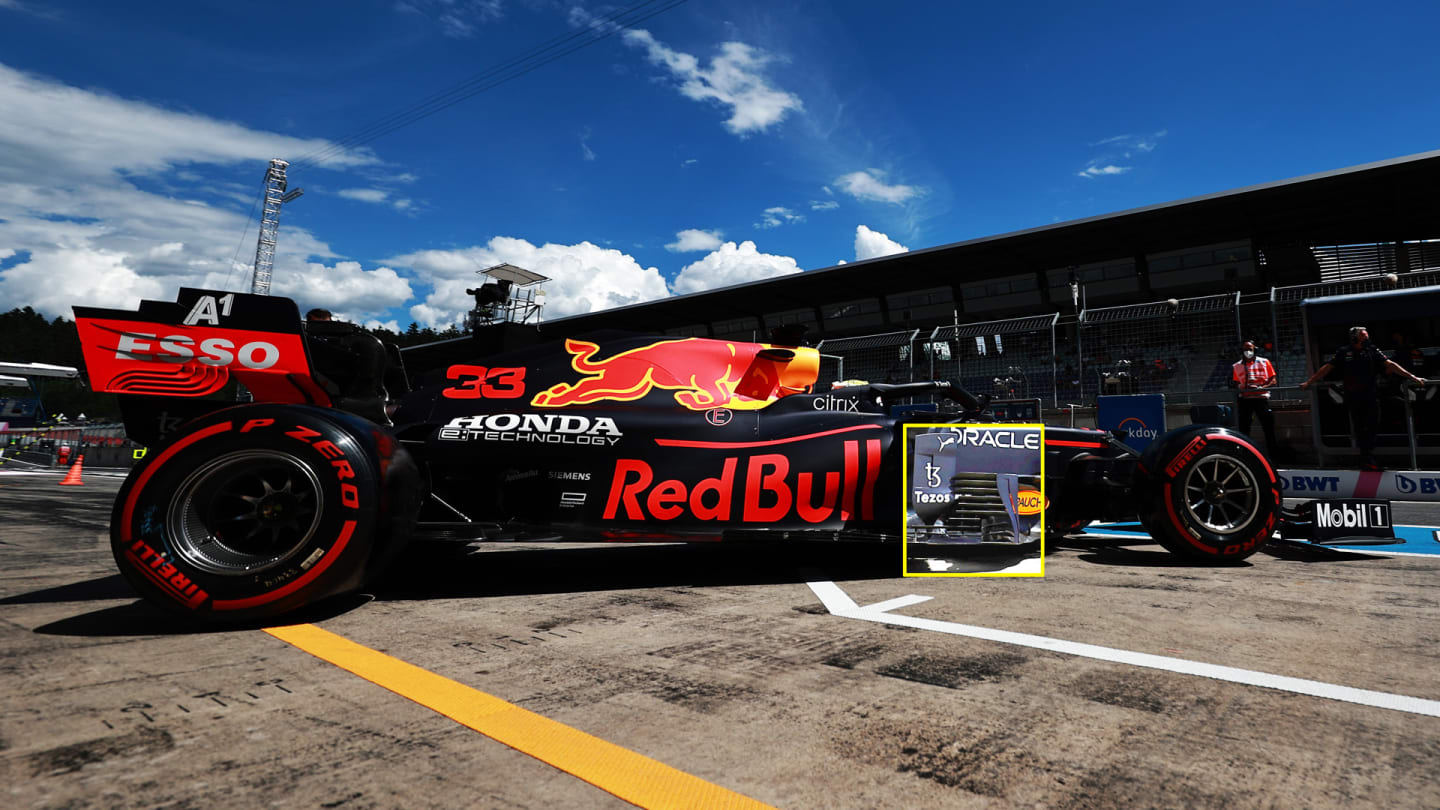
Another look at Verstappen's bargeboard, revised for the Austrian Grand Prix
The complex latticework arrangement of vanes on the barge board has been subtly changed, with Verstappen’s car featuring a decoupling of the upper and lower vanes (as you can see in the illustration above).
The combined result of the changes seemed to be a car which could carry more downforce. In the previous Styrian and French Grands Prix the Red Bull’s greater aero performance over the Mercedes was being converted into greater straightline speed for equivalent corner speed.
With the higher downforce front wing, the corner speeds were increased for a smaller straightline speed advantage than before, but an increased lap time advantage.
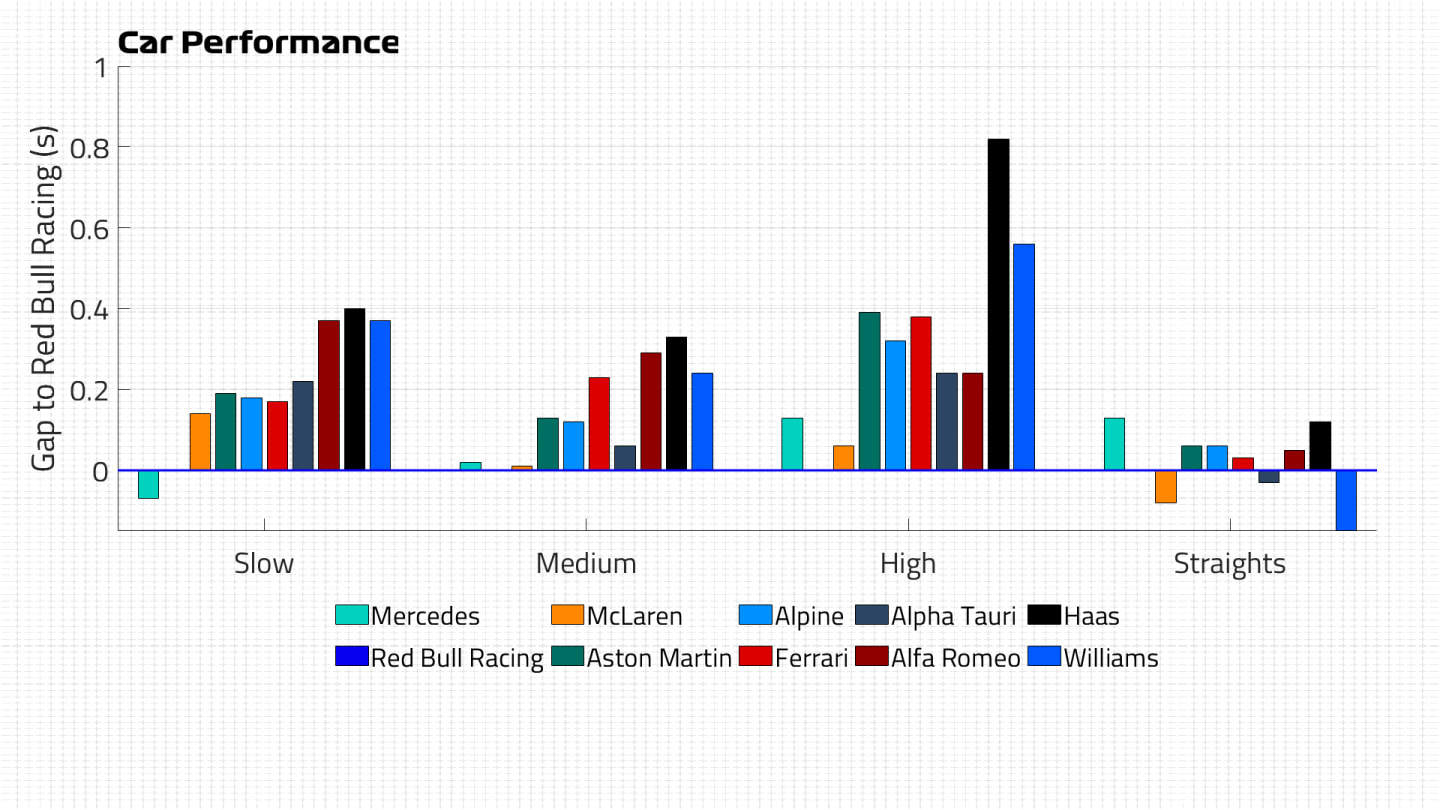
Red Bull's advantage in qualifying for the Austrian Grand Prix. Note that only one corner was considered 'medium speed' at the Red Bull Ring: Turn 1
With the old set-up, Sergio Perez was second-fastest through the speed traps in qualifying this time, with Verstappen only 12th, around 4 km/h slower (with the Mercs of Lewis Hamilton and Valtteri Bottas 17th and 20th respectively).
How Red Bull use their greater aero advantage will vary from track to track, but that’s less significant than the fact the car is continuing to prove highly responsive to development, in contrast to the Mercedes.
LISTEN: To penalise or not to penalise… the F1 Nation gang review the Austrian Grand Prix
YOU MIGHT ALSO LIKE
FeatureF1 Unlocked THIS WEEK IN F1: 10 quiz questions on the Monaco Grand Prix and F1 history in Barcelona
News ‘I hope it will be a bit more similar to Imola’ – Verstappen hopeful he can bounce back from Monaco disappointment in Spain
News FIA Thursday press conference – Spain
Feature SPANISH GRAND PRIX – Read the all-new digital race programme here
